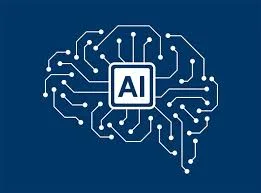Artificial Intelligence AI
Artificial intelligence (AI) has emerged as a transformative force, revolutionizing industries and reshaping the way we live and work. From intelligent virtual assistants to autonomous vehicles, the applications of AI are vast and diverse. In this blog post, we’ll explore the fundamentals of artificial intelligence, delve into its various types, and examine how they are being applied across different sectors.
What is Artificial Intelligence?
At its core, artificial intelligence refers to the simulation of human intelligence in machines, enabling them to perform tasks that typically require human intelligence. These tasks include problem-solving, learning, reasoning, perception, and language understanding. AI systems are designed to analyze vast amounts of data, recognize patterns, and make decisions with minimal human intervention.
Types of Artificial Intelligence
1. Narrow AI (Weak AI)
Narrow AI, also known as weak AI, refers to AI systems that are designed to perform specific tasks within a limited domain. These systems excel at one particular task but lack the general intelligence and versatility of humans. Examples of narrow AI include virtual assistants like Siri and Alexa, recommendation algorithms used by streaming services, and image recognition software used in facial recognition systems.
2. General AI (Strong AI)
General AI, also known as strong AI, refers to AI systems that possess the ability to understand, learn, and apply intelligence across a wide range of tasks, similar to human intelligence. General AI remains largely theoretical and has yet to be achieved. Such systems would be capable of reasoning, problem-solving, and adapting to new situations autonomously.
3. Artificial Superintelligence
Artificial superintelligence (ASI) refers to a hypothetical future AI system that surpasses the cognitive capabilities of humans in every aspect. ASI would possess superhuman intelligence and would potentially be capable of solving complex problems, inventing new technologies, and advancing scientific research at an unprecedented rate. The development of ASI raises profound ethical and existential questions about the implications of creating a form of intelligence superior to our own.
Applications of Artificial Intelligence
1. Healthcare
AI is revolutionizing healthcare by enabling early disease detection, personalized treatment plans, and predictive analytics. AI-powered diagnostic tools can analyze medical images, such as X-rays and MRIs, to detect abnormalities and assist healthcare professionals in making accurate diagnoses. Additionally, AI-driven predictive models can forecast disease outbreaks and identify at-risk patient populations, facilitating proactive interventions and improved public health outcomes.
2. Finance
In the finance industry, AI is being used to automate routine tasks, detect fraudulent activities, and optimize investment strategies. AI-powered algorithms analyze market data in real-time to identify trading opportunities and manage investment portfolios more effectively. Moreover, AI-driven chatbots and virtual assistants are enhancing customer service experiences by providing personalized financial advice and support.
3. Transportation
AI is driving innovation in the transportation sector, particularly in the development of autonomous vehicles. Self-driving cars equipped with AI algorithms can navigate roads, interpret traffic signals, and avoid obstacles with remarkable precision. Additionally, AI-powered predictive maintenance systems can monitor vehicle performance in real-time, identifying potential issues before they escalate and ensuring optimal fleet efficiency.
4. Education
In education, AI is transforming the learning experience through personalized tutoring, adaptive learning platforms, and intelligent content recommendation systems. AI-powered educational tools can assess students’ individual learning styles and preferences, providing customized learning materials and feedback to enhance their comprehension and retention. Furthermore, AI-driven analytics enable educators to track student progress, identify areas for improvement, and tailor instructional strategies accordingly.
Conclusion
Artificial intelligence represents a paradigm shift in how we interact with technology and perceive the capabilities of machines. From narrow AI applications like virtual assistants to the theoretical concept of artificial superintelligence, the potential of AI to revolutionize industries and drive innovation is boundless. As AI continues to evolve and permeate every aspect of our lives, it is imperative to foster responsible development and ethical use to ensure that AI technologies benefit society as a whole. By understanding the various types of artificial intelligence and their applications, we can harness the power of AI to solve complex challenges and shape a brighter future for generations to come.



